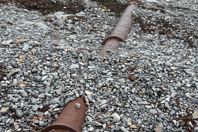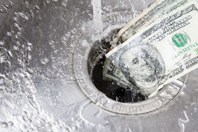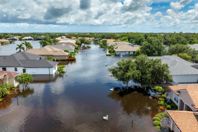FUNDING RESOURCES
-
There has been an abundance of funding available to address the estimated 9.2 million lead service lines currently deliver drinking water to homes, businesses, schools, and unsuspecting citizens throughout the United States. So it is disheartening to realize that millions of lead water lines are still delivering water to citizens.
-
Water pricing often fails to reflect scarcity, quality, or long-term risk, forcing companies to act internally. But this action is not being done in a vacuum. The ripple effect of internal water pricing is bound to impact water utilities, and ultimately, ratepayers and consumers.
-
Misinformation and confusion could prevent some utilities from benefitting from the aqueous film-forming foam multidistrict litigation (AFFF MDL) settlements. Here are five common myths about the AFFF MDL PFAS settlements and how public water systems can make the most of this unprecedented funding opportunity.
-
One of the most pressing challenges facing utilities today is how to effectively respond to surging industrial demands while managing costs and maintaining established levels of service to existing customers. Thanks to new funding sources and drivers such as AI, the landscape has changed dramatically in recent years. Industries such as data centers and semiconductors are consuming massive volumes of water to support cooling and manufacturing — and creating equally daunting challenges on the wastewater front.
-
The 2024 hurricane season was one of the most severe on record, creating unprecedented destruction to the tune of $182.7 billion worth of damage. Scientists predict that this year's storm season, which officially began June 1, will likely be highly active and volatile as well. As hurricanes become more difficult to accurately predict and prepare for, the damage caused by burst pipes, flooding, downed trees and debris, and disrupted utilities is also increasing.
-
Focusing on lifecycle ROI reveals ozone's value. It significantly reduces chemical and operational costs while extending filter media life, providing measurable long-term financial savings and compliance resilience.
-
Federal procurement is getting a major makeover. Big changes have occurred, and more are on the horizon. Companies that sell into the federal marketplace definitely need to carefully monitor what is happening.
-
While contractor qualifications guide early-phase selection in collaborative delivery, cost considerations take priority during guaranteed maximum price development. Navigating this shift requires strategic procurement approaches to uphold project value, strengthen contractor engagement, and reduce risk.
-
In a recent episode of Water Online Live, host Kevin Westerling was joined by Joseph Kane of Brookings Metro and Ashley Lucht of Quantified Ventures, who helped address concerns about recent changes to State Revolving Fund (SRF) allotments while offering advice for how to secure project funding. This article highlights the important insights shared.
-
Water infrastructure and water purity are a top focus for government leaders throughout America. Across the country, cities and counties are investing in large-scale water and wastewater infrastructure upgrades to modernize systems, comply with tightening environmental regulations, and meet rising demand.











